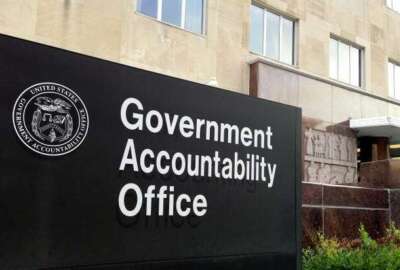The Defense Department’s management of public resources is still an awful long way from perfection, but on Tuesday, DoD managed to do something it’s only pulled off twice before: Getting itself removed from a specific area of the Government Accountability Office’s High Risk List.
In releasing its latest version of the list, updated every two years with each new Congress, GAO determined the Pentagon has made enough progress on the topic of real property management that it’s no longer one of the most critical areas of concern from a governmentwide oversight perspective.
The department’s $1.3 trillion in real estate and facilities had been deemed a high risk area by GAO since 1997, largely because DoD had done a poor job of holding its base support costs in check, identifying unused facilities, and accounting for the the 26 million acres of real property it owns. Even now, the department’s databases can’t completely account for all of its real estate holdings with as much precision as they should, according to GAO.
But the department has shown enough progress that the issue is no longer a top concern for the watchdog. For example, last year, DoD mandated that the military services adopt a departmentwide web-based platform to report and track its real estate data. And even though Congress hasn’t approved a round of Base Realignment and Closure (BRAC) since 2005, the department has shown it’s at least capable of using the BRAC process to rationalize its facility footprint, GAO concluded.
In another example the watchdog saw as promising, the Defense Department has led the way in the Office of Management and Budget’s “Freeze the Footprint” initiative to cut back on expensive and unnecessary facility holdings. The Army, for instance, reduced its leased space in the Washington, D.C. area — some of the most expensive leases in the country — from nearly 4 million square feet to just 1 million over the past decade.
And on military bases, the department has done a much better job of using intergovernmental support agreements with cities and counties for services like trash and snow removal and animal control, according to the new high-risk update.
Gene Dodaro, the U.S. Comptroller General, said the reforms DoD has made to real property management in recent years were due, at least in part, to stronger Congressional oversight.
“Congress required regular hearings where they had DoD come up and they had GAO continue to investigate this, and Congress stayed on them with requirements in the National Defense Authorization Act until it was improved. In some cases, there have been funds withheld for modernization efforts until they developed proper plans,” he told the House Oversight and Reform Committee Tuesday.
Across the federal government, there are still 19 high risk areas, and DoD’s “Support Infrastructure Management” category was the only one removed from the list this year. And the Pentagon is still solely responsible for numerous areas on GAO’s list.
Among them:
- DoD Weapon Systems Acquisition
- DoD Financial Management
- DoD Business Systems Modernization
- DoD Approach to Business Transformation
- DoD Contract Management
Previously, DoD has been able to get itself removed from the list in two other areas.
In the 2019 update, the watchdog removed the DoD supply chain management area from the list. That category had been there since the list’s first publication in 1990, but GAO determined the department had shown enough progress in ensuring supplies were delivered to the right place at the right time.
And in 2011, GAO took DoD’s personnel security clearance program off the list after the department demonstrated process improvements that reduced what had been a severe backlog in the security clearance process.
Since then, however, responsibility for security clearance background investigations has ping-ponged from DoD to the Office of Personnel Management’s now-defunct National Background Investigation Bureau, and back to DoD again.
And security clearances are back on the list. GAO reinstated the area to its list of top governmentwide concerns in January 2018, when the backlog had grown again to about 700,000 cases. As of yesterday’s update, GAO said there was still a backlog of 200,000 cases by the end of 2020.
Copyright
© 2024 Federal News Network. All rights reserved. This website is not intended for users located within the European Economic Area.

